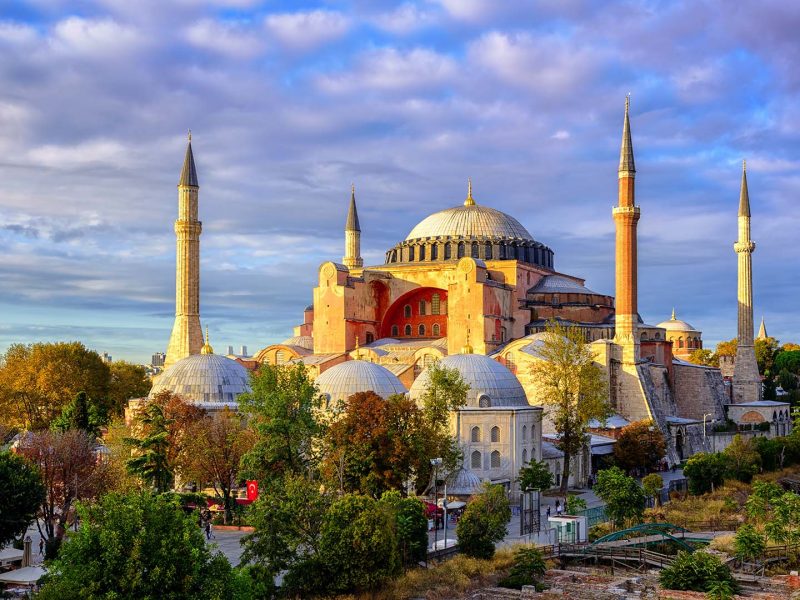Hagia Sophia has experienced many construction processes from past to present. The first construction was started by Emperor Constantius in the Byzantine period. After this was finished, Hagia Sophia was opened for worshiping. The building was built on the Temple of Artemis with the name Hagia Sophia; it was designed with a wooden roof and had traditional Latin architecture. When people began to rebel, Hagia Sophia was used for worship until it was looted.
Hagia Sophia was destroyed by rebellion then rebuilt by Theodosius II at its present location. The opening was on 10 October 415. This second Hagia Sophia was built by Architect Rofinos, but the building was destroyed during the Nika riot. After this building was destroyed in 532, Justinian I decided to build a much bigger and flashier building.
Physician Isidorus and mathematician Anthemus were architects. Legend has it that Justinian did not like any draft presented to him. But Isidorus drew a draft from a vision he saw in a dream and the Emperor admired this drawing, so he ordered the builders to work from this image.
The designed structure was huge, and because of that papering materials took time. They benefited from a temple on the grounds and sculpted products in those buildings. Egyptian Sun Temple and Ephesus Artemis Temple materials were used in this building. However, how it was all moved is still a matter of curiosity. Hagia Sophia was completed in 5 years and the first mosaics of it were made between the years 565-578. The magnificent temple also hosted the Byzantine coronation ceremonies at that time. An interesting fact is that, the dome of the temple was ruined in an earthquake in 10th. Century. The master architect of Ani in Kars, then called to repair the dome.
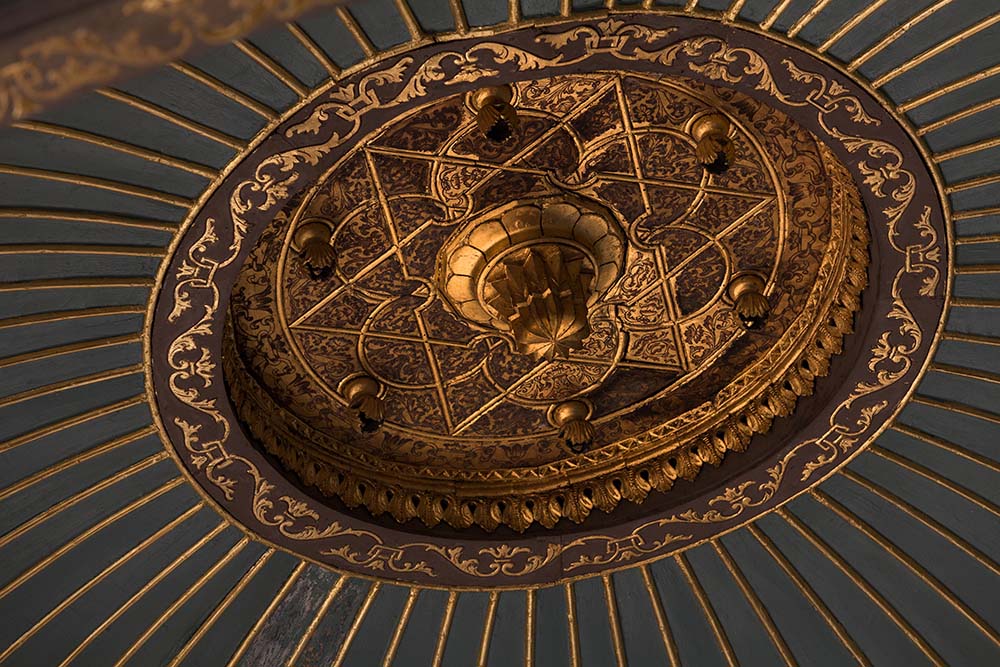
A detail from the Hagia Sophia (Ayasofya) interior.
During the Crusades, İstanbul and sacred relics were seized. After the invasion Hagia Sophia was converted into a cathedral connected to the Roman Catholic Church. When the Byzantines again seized Hagia Sophia in 1261, it was ruined. Although they tried to improve it over the years, the building never regained its former glory. After the Ottomans conquered Istanbul in 1453, Hagia Sophia Church was transformed into a mosque. Hagia Sophia was so important for Mehmet the Conqueror (Fatih Sultan Mehmet), and because of that, Mehmet did not change the name.
Hagia Sophia was supported by Selim II period, between 1566-1574. Sinan the Architect added arches and tombs to the building, together with some additional structures. One of the most prominent restorations in the Ottoman period was made by Fossati during the Sultan Abdulmecid period. Fossati revised the interior of the building and completely renovated the mosaics. Over time, though, and especially during the Ottoman decline, the building did not have such support. When there were wars, refugees took shelter in Hagia Sophia, and soldiers used it as a military base for a while.
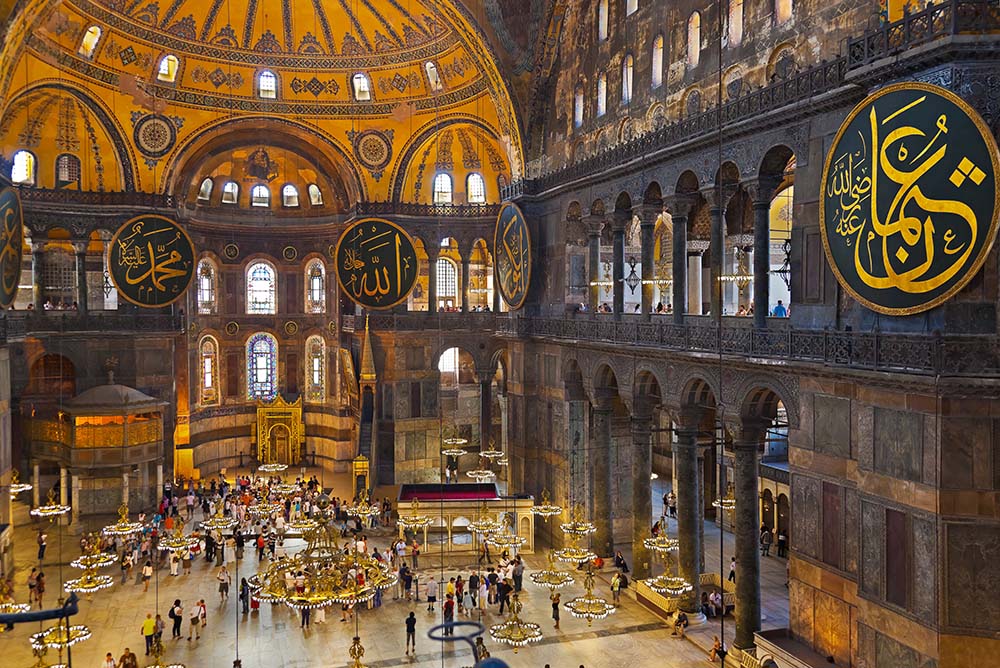
Hagia Sophia interior at Istanbul Turkey – architecture background
Hagia Sophia was closed to public from 1930-1935 as restoration was done. Some work has been done on the buildings under the order of Mustafa Kemal Atatürk. Then, according to decision of the Council of Ministers, Hagia Sophia was converted to a museum. This building has witnessed many important periods of history. When you visit here today, you may feel like you are walking in the distant, distant past. Hagia Sophia gives a mystical atmosphere in Sultan Ahmet, in part because the building itself contains great mysteries. There is a coffin on the top of the middle gate. It was made of yellow brass and it is known that the coffin belonged to Queen Sophia. It is also believed that this coffin should never be touched because if someone does touch it, a great rumble and shake will begin. The angels on the four sides of the dome represent Raphael, Azrael, Michael, and Gabriel.
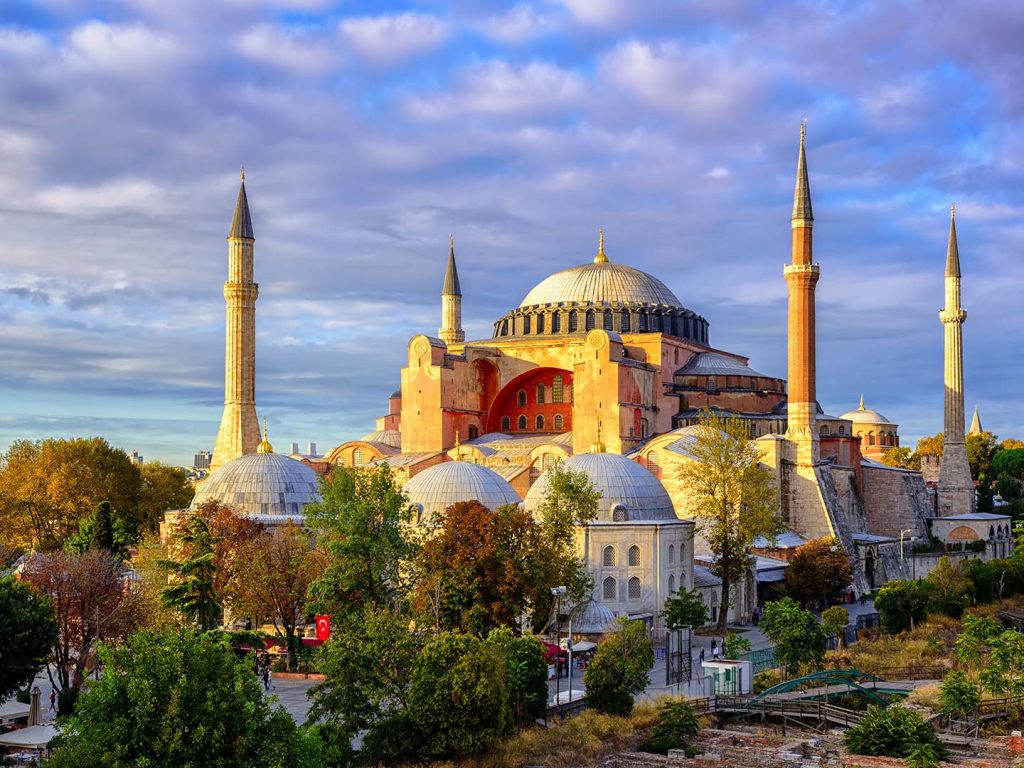
Hagia Sophia domes and minarets in the old town of Istanbul, Turkey, on sunset.
In the museum, there are also tombs, which hold the belongings of dead people. It is kind of a belief from the Ottoman period that tombs generally were made of velvet and the best clothes of dead people were hidden in there. One of the most important works in the museum is the Baptistery Pool. It resembles both the Eastern Roman and Christian Era artistic traits. You will see a column if you look inside the door when you count the doors from the right side in the direction of qibla in Hagia Sophia. The column is called “Wishing Stone” because it is wet in the summer and winter. It is believed that people with illnesses can find healing thanks to this column. You will see people putting their thumbs inside the hole and wishing.
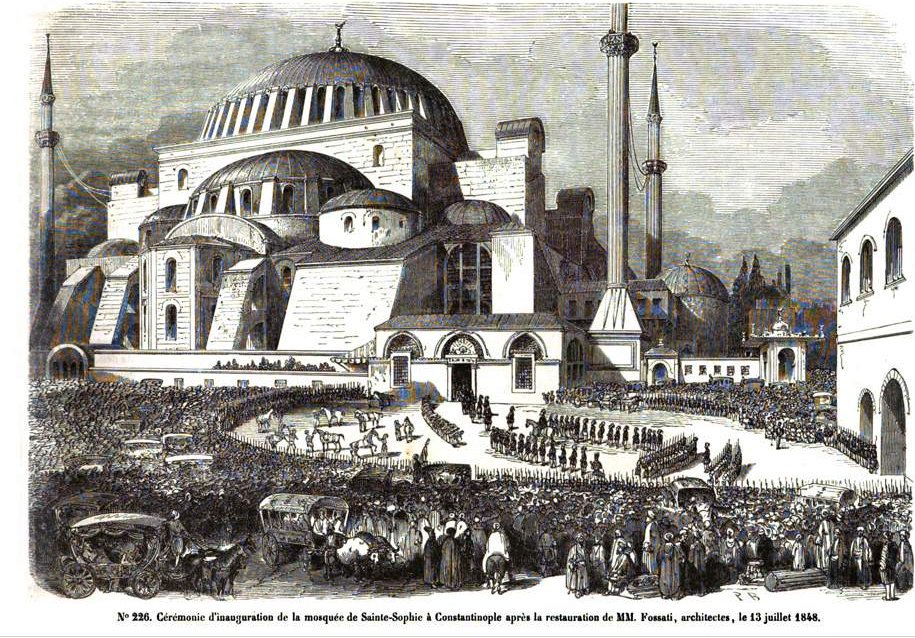
Opening Ceremony of Hagia Sophia (G. Fossati)
You should definitely visit Hagia Sophia to discover the many mysteries that its history holds.

